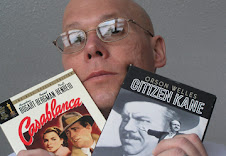
‘A Christmas Tale’ won’t get you in spirit
MATHIEU AMALRIC and Catherine Deneuve in "A Christmas Tale."
A little way into “Un Conte de Noel” (”A Christmas Tale”) I commented outloud, this isn’t any Griswold family Christmas story.
It does take place around Christmas and it does deal with a family.
But there’s nothing funny about it. It conveys no warmth of the season and it certainly lacks any humanity.
But it does have Catherine Deneuve, who at 66 definitely doesn’t look that old. No, she doesn’t look like the Catherine Deneuve of “Belle de Jour: or “The Umbrellas of Cherbourg,” but she looks pretty good.
In fact, the actor who plays her aging husband, Jean-Paul Roussillon, just doesn’t look like he would be married to someone who looks like Deneuve. Roussillon in reality is 12 years older anyway.
It’s the story of the Vuillard family. Deneuve’s character, Junon, and her husband, Abel, are hosting daughter Elizabeth ( Anne Consigny) and her son, Paull ( Emile Berling) ; another sibling, Henri (Mathieu Amalric) and his girlfriend and wife and sons and a cousin.
Six years before all of this, irresponsbile Henri purchased a theater to produce plays and it quickly went under.
Elizabeth bails him out under the condition they never see each other and have no communication and he cannot visit their parents again.
Oh yes, and another son died at a young age back in the 60s that still impacts everyone and Elizabeth has a son, Paul, 16, who has mental problems and attempted suicide.
So there you have the backdrop. Gives you a nice, warm, holiday feeling, right?
The story centers on Deneuve and a serious illness she acquires. She requires a bone marrow transplant or she will die within months. Paul and Henri are compatible donors.
Directed by Arnaud Desplechin, he makes it clear this is a dysfunctional family with lots of problems, both emotional as well as drugs and booze and everything else.
Only the husband,Roussillon, seems to be stable and have a brain in his head.
Everyone else has a grudge to bear or an addiction or harbors resentment.
There are lots of ugly scenes and selfish people.
And just why Henri is banished from the family for having acquired debts really isn’t made clear.
It is difficult to care about any of the people in this film. Christmas, in better pictures, is almost a character in itself. Not here.
This film really could have taken place at any time of the year.
All of this would have been more tolerable in a shorter film, but this thing is 2 1/2 hours long. Spending that much time with people you don’t like involved in situations you don’t care about means just one thing: You just want the movie to end.
And with no real conclusion to the dilema, the film credits start rolling and we can bid adieu to this mismatched family forever. The Vuillard family will not become a part of the Christmas season as have the Griswolds and Ralphie and his BB gun.
A CHRISTMAS TALE • Directed by Arnaud Desplechin • Story by Desplechin and Emmanuel Bourdieu • Runtime: 150 minutes • In French with subtitles • Not rated but with definite adult content • 11⁄2 stars out of 4















